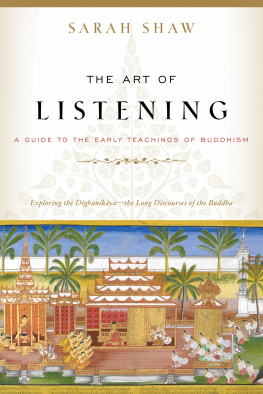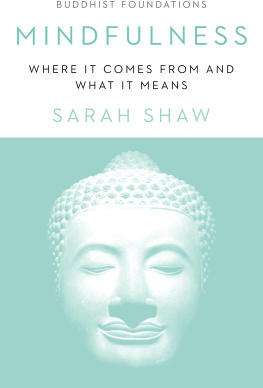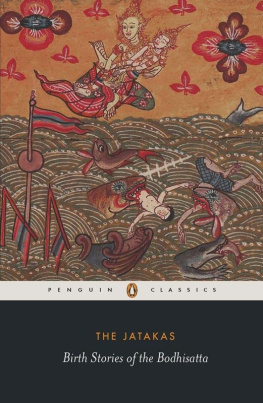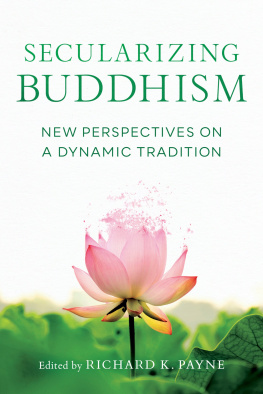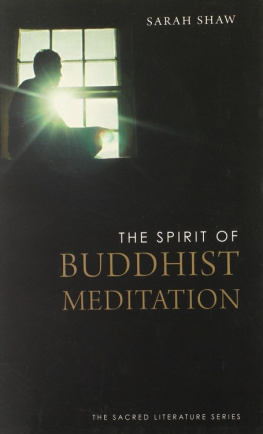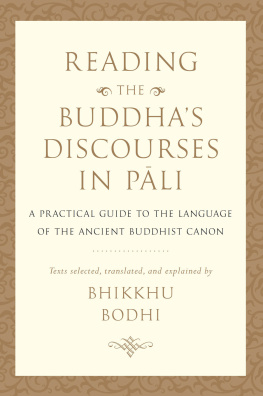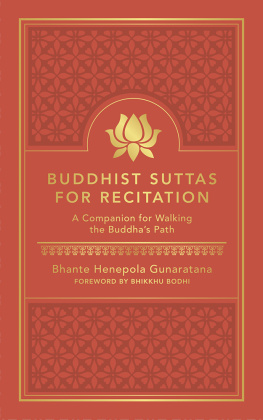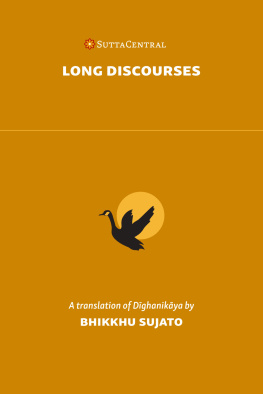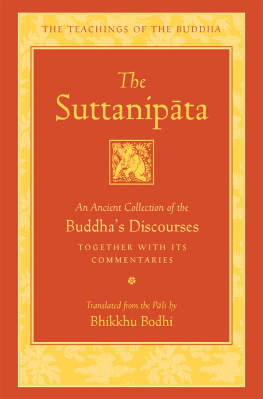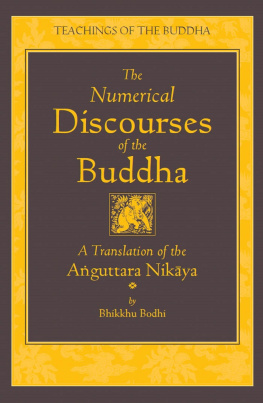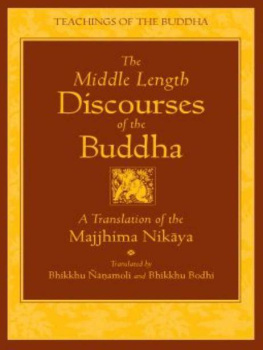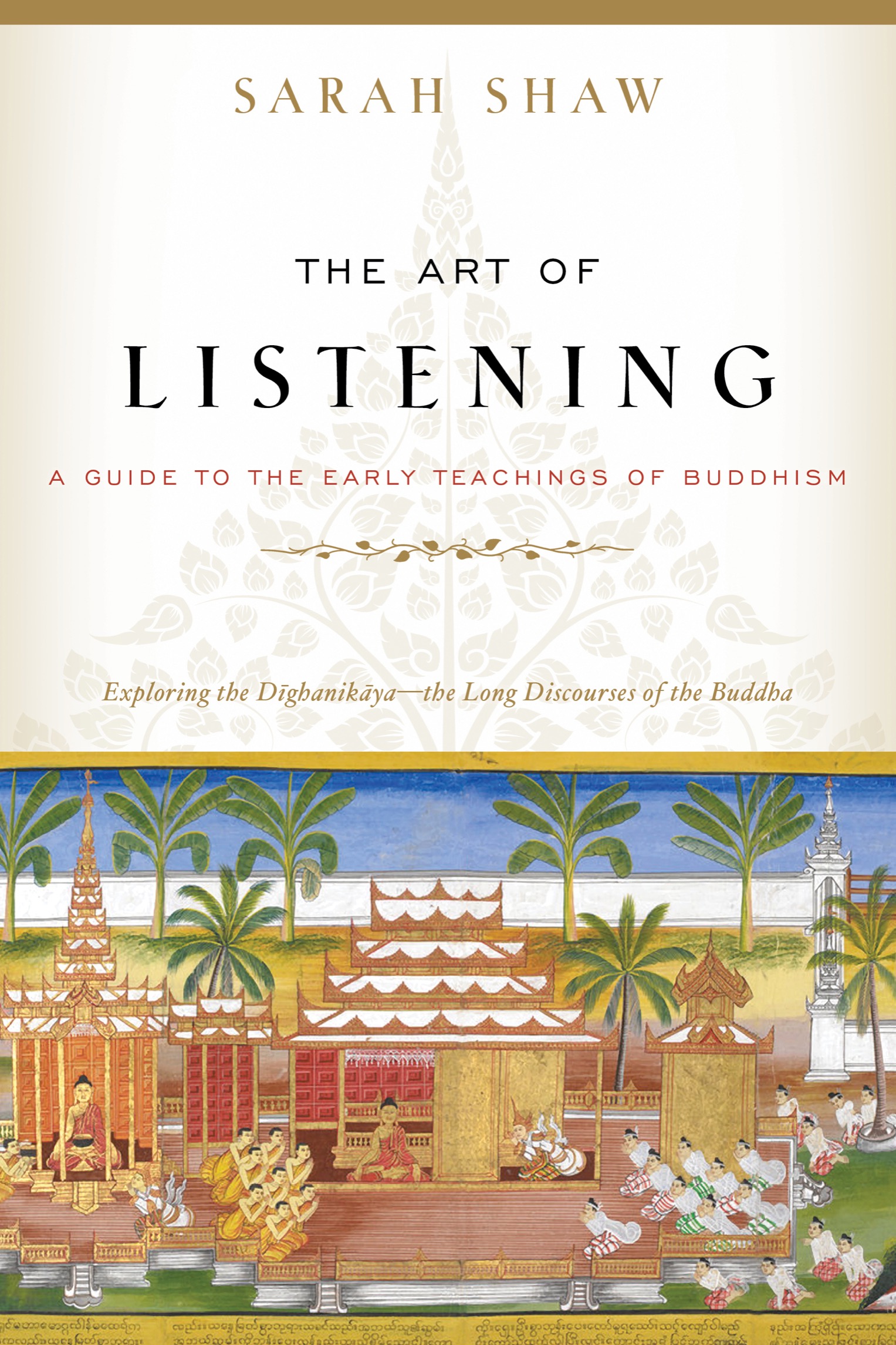Acknowledgments
A FEW DECADES AGO , my meditation teacher, Lance Cousins, invited me to join a sutta group for people who had learned meditation with him for a few months or more. The suttas he chose were the Dialogues of the Buddha in Thomas William Rhys Davidss magisterial, if dated, translation. We read several of the suttas discussed here, and the format was quite simple. We practiced together, chanted, listened to the sutta, and then discussed it. At the end of the meeting a blessing was chanted, and we continued with general chat. All we had to do was listen to the sutta and not judgea rare and still sometimes difficult skill. We then investigated it, with Lances help. This group and our discussions gave me an introduction to the vast scope and feeling of adventure underlying the Buddhist path and teachings. This could be felt simply by hearing the suttas read out loud. It was one of the major turning points in my life. If this book manages to communicate any hint of the wonder of those meetings, which so often ended as the dawn chorus chirped the end of our discussions, that is good enough for me. Lance is no longer with us, but I would like to thank those other participants for making it all possible, as well as other friends for our group work in samatha.
From an academic perspective, I would like to thank Professor Jim Adams for introducing Greek oral literature in the classical Greek part of my course at Manchester University; Dr. Douglas Brooks-Davies, my English tutor in Manchester, for teaching number symbolism and structure in early modern English literature; and Professor Richard Gombrich, with whom I read some of these suttas in Pli. Professor Pamela Clemit has been particularly helpful in discussions about literary terminology. I would also like to thank Professor John Brockington, Mary Brockington, and Dr. Marina Pyrovolaki for conversations about oral literature. Dr. Marco Meyer, Daniel Roules, and Richard Teall gave excellent comments and feedback on some of these chapters. I had helpful conversations with Professor Kate Crosby, Guy Healey, Dr. Pyi Phyo Kyaw, Dr. Aleix Ruiz-Falques, Professor Peter Skilling, Dr. Andrew Skilton, and Chris Westrup. Thanks too to attendees at a Sanskritists lunch at Balliol College, Oxford, for their very useful comments. I am grateful to the memory of T. W. Rhys Davids and Maurice Walshe, whose pioneering translations of the Dghanikya I consult all the time; they are not acknowledged as they should be.
Many will share my thanks to those working to translate Buddhist texts for the general public. The Buddhist tradition of free dhamma transmission is a great thing: we are lucky we now have websites like SuttaCentral and Access to Insight. While I was writing this book during lockdown, away from my library, these apparently magical online resources provided texts as quickly as a strong man might stretch his armthe speed of movement between human realms and the Heaven of Thirty-Three. So my thanks to all scholars providing these services.
This book emerged as an idea from talks in a podcast series titled The Early Teachings of the Buddha, which Wise Studies asked me to give. I am particularly grateful to Ryan Spielman and Spencer Barron for inviting me to do this and being so encouraging. Professor Vesna Wallace, then Numata chair of Buddhist Studies at Oxford, asked me to give a lecture series at Balliol College on literary features of the canon in 2010. A good part of this book is based on those talks and lectures. I would like to express great gratitude to Venerable Dr. Dhammasmi for introducing me to so many features of Shan and Buddhist practice and for many visits to Southeast Asia. I am grateful, too, to Chao Khun Laow Panyasiri for giving such an extensive and patient training in Thai chanting styles, in particular the Mahsamaya-sutta, over the last twenty-five years. It has put these long texts into a completely different perspective for me. Warm thanks also go to my meditation teacher, Boonman Poonyathiro, and his wife, Dang.
Thanks to my editor, Matt Zepelin, for his creatively helpful suggestions. I am grateful to the Khyentse Foundation for funding my Readership in Buddhist Studies at the University of South Wales. Particular thanks to Dr. Nick Swann, as well as colleagues and students at the University of Oxford, the University of South Wales, and the Oxford University Department of Continuing Education.
When the book was completed Bhikkhu Bodhi provided extensive comment and corrections. The care he took was generous, insightful, and painstaking.
Not many people in publishing houses have the gift of seeing what someone wants to do and can encourage new directions. So thanks to Nikko Odiseos, president of Shambhala Publications, for suggesting the book to me and having faith in it.
Lastly, thank you to Charles, Jeremy, Roland, and Lucy.
Introduction
M OST OF US liked hearing stories in the evening as children. At my boarding school, during sewing in the evening after dinner, our teacher used to read us long novels over a number of evenings. We complained, of course, but I used to like just hearing someones voice telling me a story. Something in my mind relaxed, and events of the day fell into perspective. Such reading aloud, particularly in the evenings, was widespread in Western cultures until recently. For every Victorian novel bought, nine people heard it: families used to read to one another as everyone relaxed after the day.
While writing this book during the COVID-19 pandemic, I was struck by how people again find listening at home so helpful and soothing in times of fear and, for many, solitude. Our genetic code must be hardwired to this method of letting go, and we have refound the pleasure of listening. Before the virus confined us all to our homes, we could sit on a train, plane, or bus during the evening rush hour and see others, having finished a hard days work, shut their eyes and visibly unwind with earbuds in place: they would be just listening, transported, to music, a story, or perhaps a talk on a podcast. And this has continued. We are at home in our various states of quarantine or social distancing, and many of us are listening to apps, the radio, music, or, if were lucky, birdsong in surprisingly unpolluted skies.

